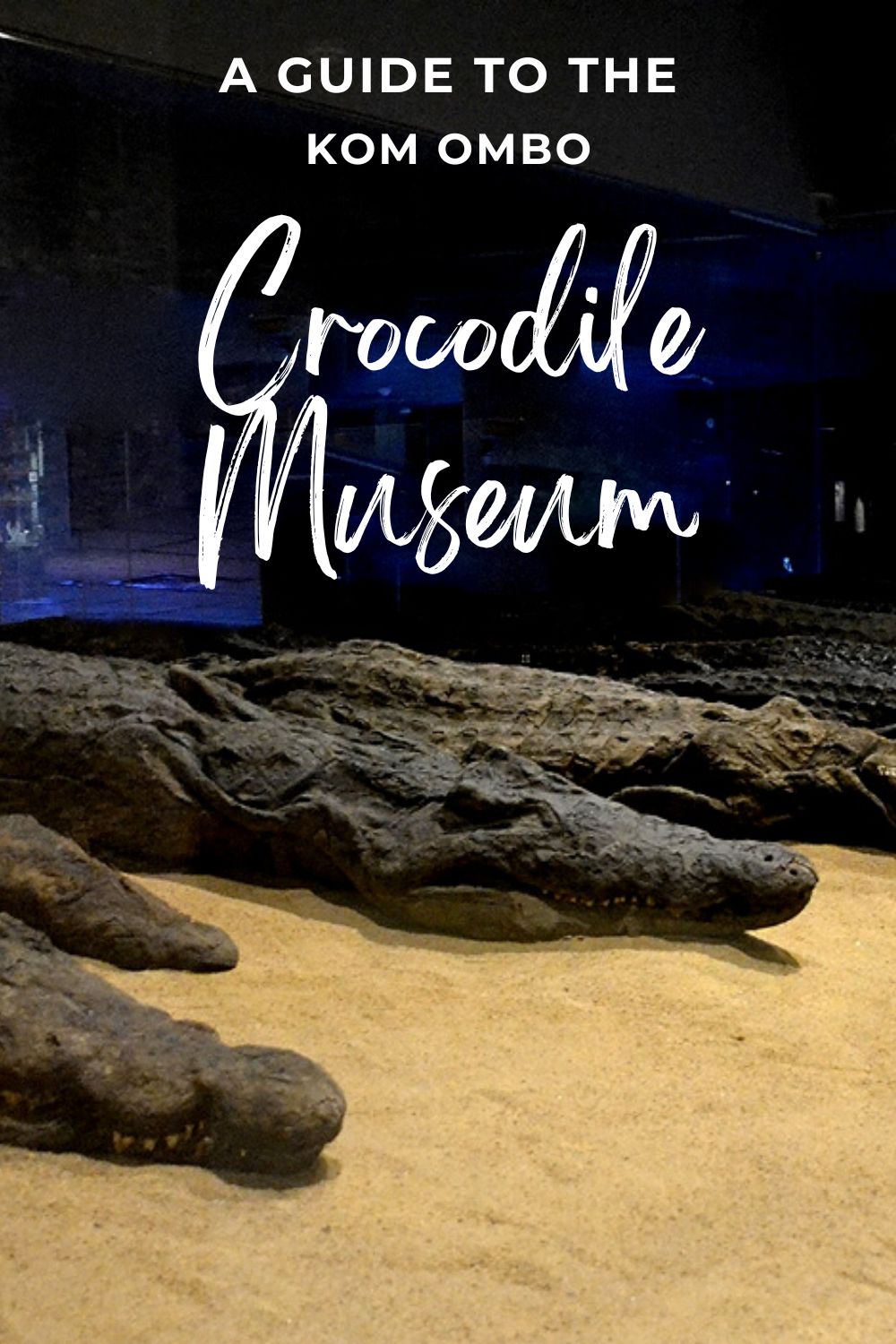An Ultimate Guide to the Kom Ombo Crocodile Museum
5 min readThis intriguing museum in Kom Ombo narrates the history of Ancient Egypt’s crocodile god – and includes an exhibit of mummified crocodiles. Don’t miss the Crocodile Museum next to the Temple of Kom Ombo with its fascinating collection of crocodile mummies, statues and curiosities. It’s estimated that some 300 crocodile mummies were discovered in this area – and many are now on display inside the museum. They’re exhibited basking in the sand like they would in ancient times. Other exhibits include offerings left by faithful pilgrims to the crocodile god Sobek (one of the two deities worshiped at the Temple of Kom Ombo). As an expat living in Cairo, I’ve visited this museum numerous times and it’s one of my favorite stops on a Nile cruise. It features exhibits on the complicated process of animal mummification. Other eerie displays feature crocodile fetuses, eyes and ivory teeth inserted into the crocodiles after mummification. Dimly-lit and nicely air-conditioned, the museum is also a welcome respite after a hot afternoon sightseeing the temple. It has clear labels in both Arabic and English – and takes about an hour to walk through at leisure. Who is Sobek? Sobek is the crocodile god worshiped at the nearby Temple of Kom Ombo, where the ancients attempted to appease the ferocious Nile crocodiles known to devour animals and humans alike. The temple once housed real-life crocodiles who were bred there, then mummified and offered as sacrifices to Sobek. Today, many of those mummies are displayed inside the museum. The stretch of the Nile around Kom Ombo was once an ancient hub for crocodile life and the center of worship for Sobek. But the crocodiles that once basked on the river banks all migrated south after the construction of the High Dam in Aswan. According to legend, Sobek rose from primeval waters and created the Nile River from his sweat. He was associated with pharaonic power, fertility and military prowess. He also held protective powers that shielded his believers from the dangers of the turbulent Nile. Sobek was an aggressive and animalistic deity who resembled his patron animal, the violent Nile crocodile. Real-life Nile crocodiles can weigh up to 750 kilos and swim at speeds up to 35 km/h. Devoted pilgrims made offerings to Sobek and hoped for his blessings and protection. 5 Must-see highlights at the Crocodile Museum Here are some highlights at the Crocodile Museum that you shouldn’t miss: 1. Crocodile mummies An enormous exhibit near the entrance features a selection of crocodile mummies ranging from 2 meters to 4.3 meters long. The display features 22 mummified crocodiles that were discovered at a necropolis near El Shatb, a village just 2 kilometers from the temple. In Ancient Egypt, these mummies were offered to Sobek, who was associated with fertility and protection. During mummification, the dead crocodile was first dried in a pool of natural salt to remove any bodily moisture. The body was then wrapped in linen bandages soaked in oils meant to protect the creature in their journey to the afterlife. 2. Sobek figurine This beautiful bronze figurine of Sobek depicts the crocodile-headed god with a muscular human body that emphasizes his power and fertility. The figurine dates to the Late Period (724-333 BCE) and was likely once adorned with inlaid or enamel colors. Sobek wears a headdress with ram horns. This is topped by a sun disk and a plume of feathers that link him to the sun. 3. Fayoum mummies This array of colorful, bandaged mummies from Fayoum were offered by faithful worshipers to the crocodile god. Depending on their wealth, believers in Ancient Egypt made offerings to Sobek in the form of large, mummified crocodiles or smaller animals and tokens. Dating to the Roman Period (30 BCE to 450 CE), these mummies were found in El Shatb and Fayoum. They are decorated with colored bandages or wrapped in simple linen. It’s thought bones and stones once adorned their eyes. 4. Stone and wood offerings This collection of stone and wood crocodile figurines were offered to appease Sobek as more humble gifts compared to the full-sized crocodile mummies. The selection of figures dates to the Graeco-Roman period (724 BCE to 450 CE) and were likely once gilded. Some of the figurines have holes in their heads where gilded solar disks were inserted. The exhibit includes a limestone image of a crocodile mummy and a wooden crocodile atop a coffin that once held a croc mummy inside (now lost). Crocodile eggs and fetuses were also offered to appease the crocodile god. These tokens and small objects symbolized the people’s reverence for Sobek and desire for his blessings. 5. Nebnefer offering This beautiful object is an offering to Sobek from Nebnefer, a priest who lived during the reign of Amenhotep III (1391-1353 BCE). The object is decorated on all four sides with images of the goddess Hathor, the name of Amenhotep III and depictions of Nebnefer praying to Sobek. A pair of crocodiles adorn the top of the object and rest on its base. How to get to Kom Ombo: Kom Ombo is about 50 kilometres north of Aswan. If you’re going on a Nile cruise, your boat will definitely stop at Kom Ombo. The itinerary usually starts with sightseeing at the Temple of Kom Ombo then a visit to this museum, which is right next door. Alternatively, sign up for a day tour to Kom Ombo from either Luxor or Aswan. If you’re going solo, take a local train or hired driver to Kom Ombo from either city. Need to know: Tickets: 240 EGP (360 EGP starting from December 2023). Your ticket to the Temple of Kom Ombo includes entrance to the crocodile museum. Hours: Daily from 7am to 9pm. Conclusion With its fascinating collection of crocodile mummies, statues and curiosities, the Kom Ombo Crocodile Museum is a must-see on your Egypt itinerary. This intriguing museum narrates the history of Ancient Egypt’s crocodile god and details the complex process of animal mummification. The museum enriches your experience of the Temple of Kom Ombo – and offers fascinating insights into Ancient Egyptian rituals and beliefs. I would love to hear from you. Is the Kom Ombo Crocodile Museum on your Egypt itinerary? MORE RESOURCES: 12 Must-See Things At The Temple of Kom Ombo Pin it:
The post An Ultimate Guide to the Kom Ombo Crocodile Museum appeared first on Vanilla Papers.
This intriguing museum in Kom Ombo narrates the history of Ancient Egypt’s crocodile god – and includes an exhibit of mummified crocodiles.
Don’t miss the Crocodile Museum next to the Temple of Kom Ombo with its fascinating collection of crocodile mummies, statues and curiosities.
It’s estimated that some 300 crocodile mummies were discovered in this area – and many are now on display inside the museum.
They’re exhibited basking in the sand like they would in ancient times.
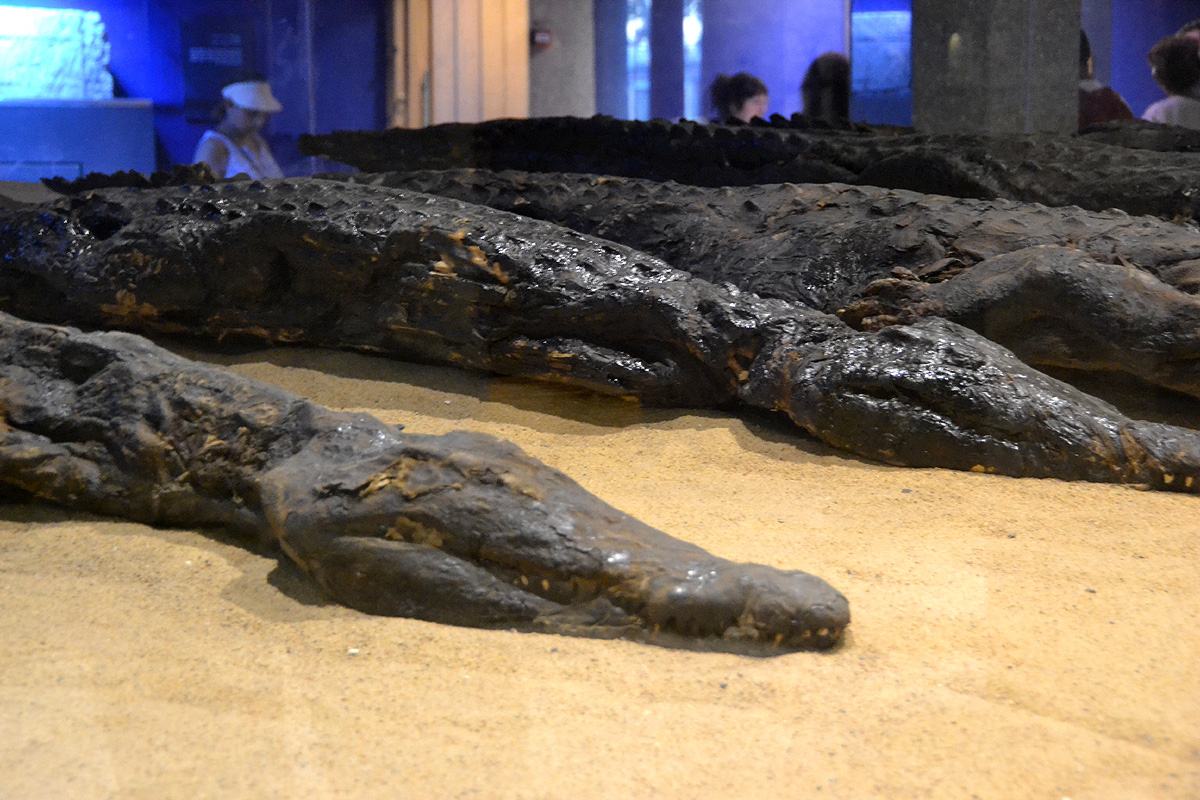

Other exhibits include offerings left by faithful pilgrims to the crocodile god Sobek (one of the two deities worshiped at the Temple of Kom Ombo).
As an expat living in Cairo, I’ve visited this museum numerous times and it’s one of my favorite stops on a Nile cruise.
It features exhibits on the complicated process of animal mummification. Other eerie displays feature crocodile fetuses, eyes and ivory teeth inserted into the crocodiles after mummification.
Dimly-lit and nicely air-conditioned, the museum is also a welcome respite after a hot afternoon sightseeing the temple.
It has clear labels in both Arabic and English – and takes about an hour to walk through at leisure.
Who is Sobek?
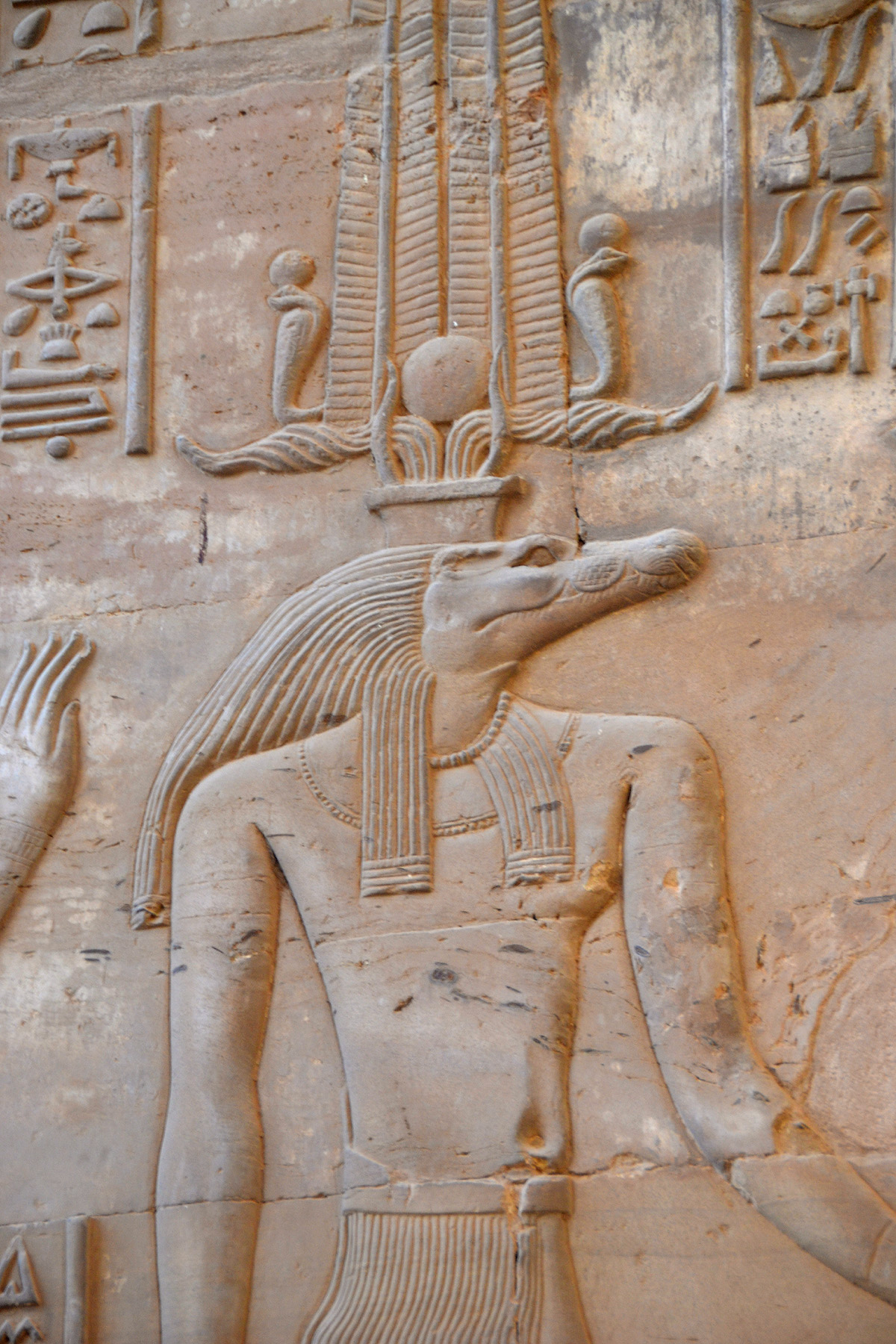

Sobek is the crocodile god worshiped at the nearby Temple of Kom Ombo, where the ancients attempted to appease the ferocious Nile crocodiles known to devour animals and humans alike.
The temple once housed real-life crocodiles who were bred there, then mummified and offered as sacrifices to Sobek.
Today, many of those mummies are displayed inside the museum.
The stretch of the Nile around Kom Ombo was once an ancient hub for crocodile life and the center of worship for Sobek.
But the crocodiles that once basked on the river banks all migrated south after the construction of the High Dam in Aswan.
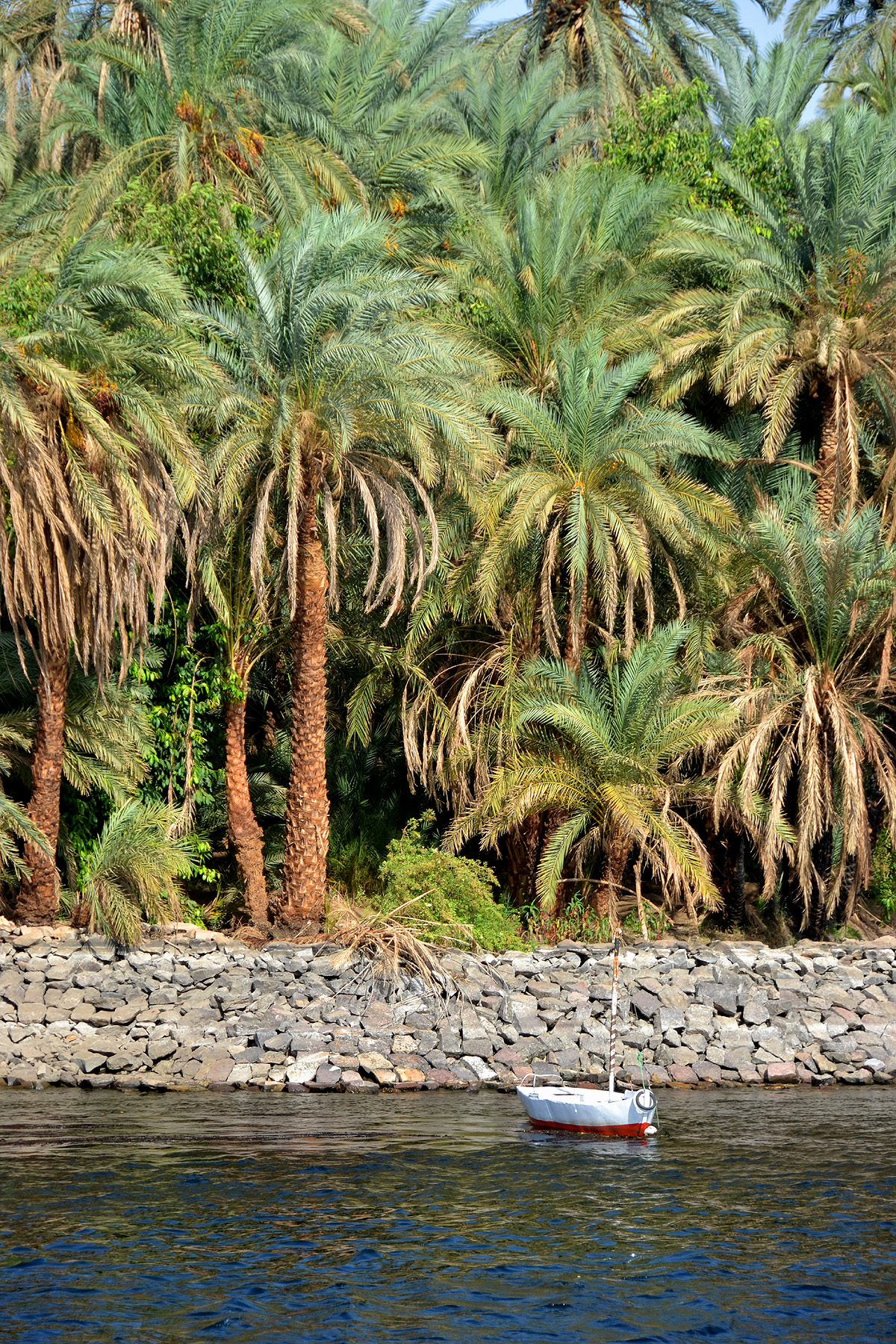

According to legend, Sobek rose from primeval waters and created the Nile River from his sweat.
He was associated with pharaonic power, fertility and military prowess. He also held protective powers that shielded his believers from the dangers of the turbulent Nile.
Sobek was an aggressive and animalistic deity who resembled his patron animal, the violent Nile crocodile. Real-life Nile crocodiles can weigh up to 750 kilos and swim at speeds up to 35 km/h.
Devoted pilgrims made offerings to Sobek and hoped for his blessings and protection.
5 Must-see highlights at the Crocodile Museum
Here are some highlights at the Crocodile Museum that you shouldn’t miss:
1. Crocodile mummies
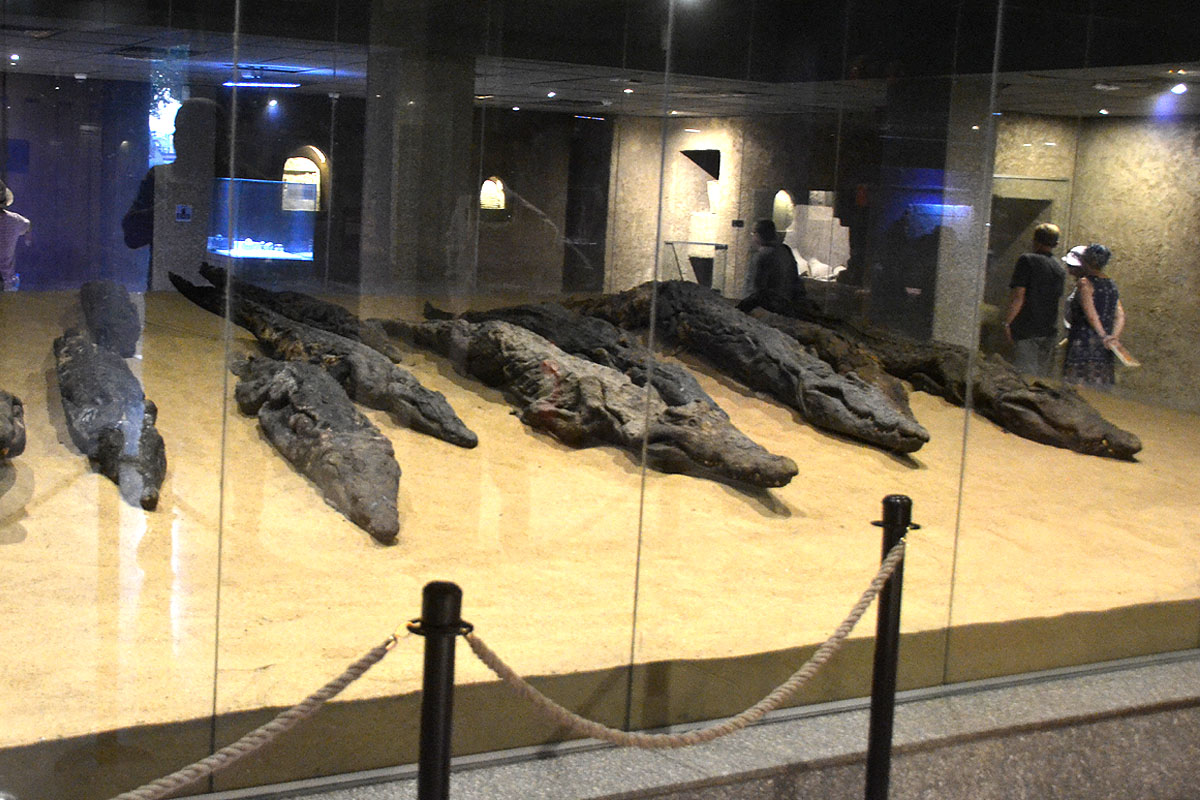

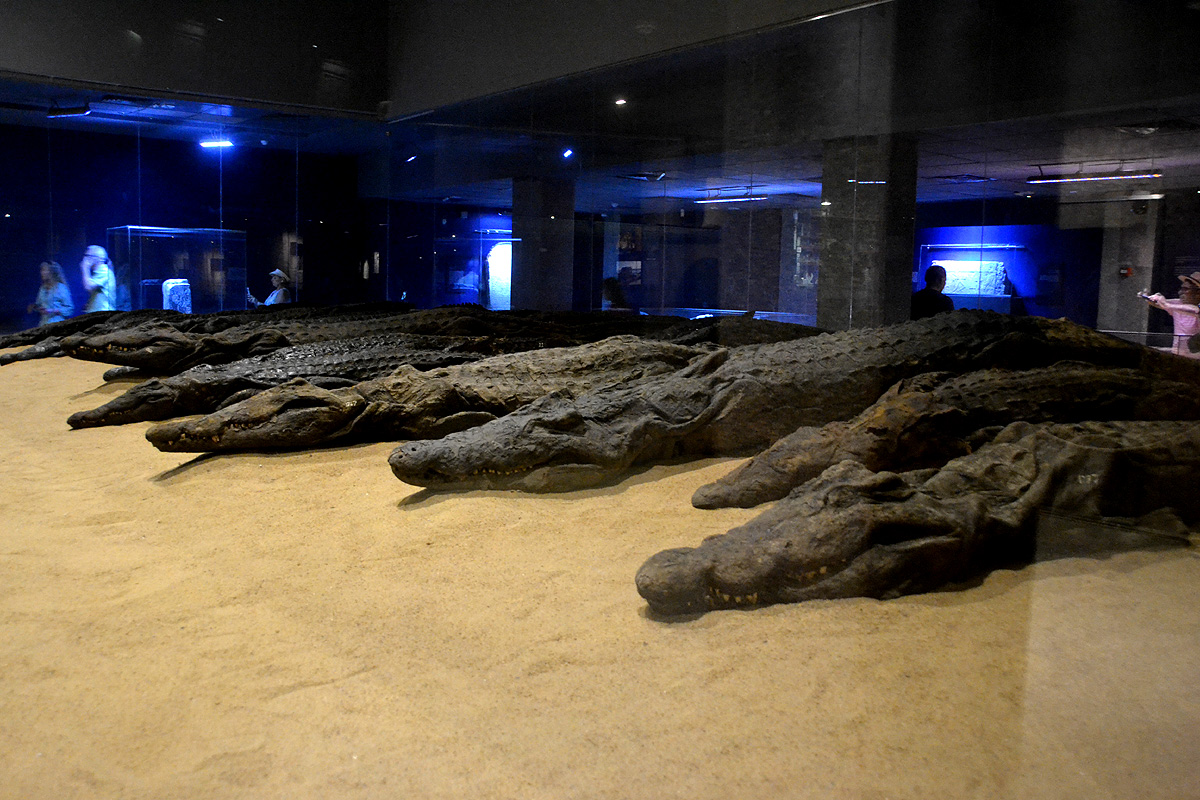

An enormous exhibit near the entrance features a selection of crocodile mummies ranging from 2 meters to 4.3 meters long.
The display features 22 mummified crocodiles that were discovered at a necropolis near El Shatb, a village just 2 kilometers from the temple.
In Ancient Egypt, these mummies were offered to Sobek, who was associated with fertility and protection.
During mummification, the dead crocodile was first dried in a pool of natural salt to remove any bodily moisture. The body was then wrapped in linen bandages soaked in oils meant to protect the creature in their journey to the afterlife.
2. Sobek figurine
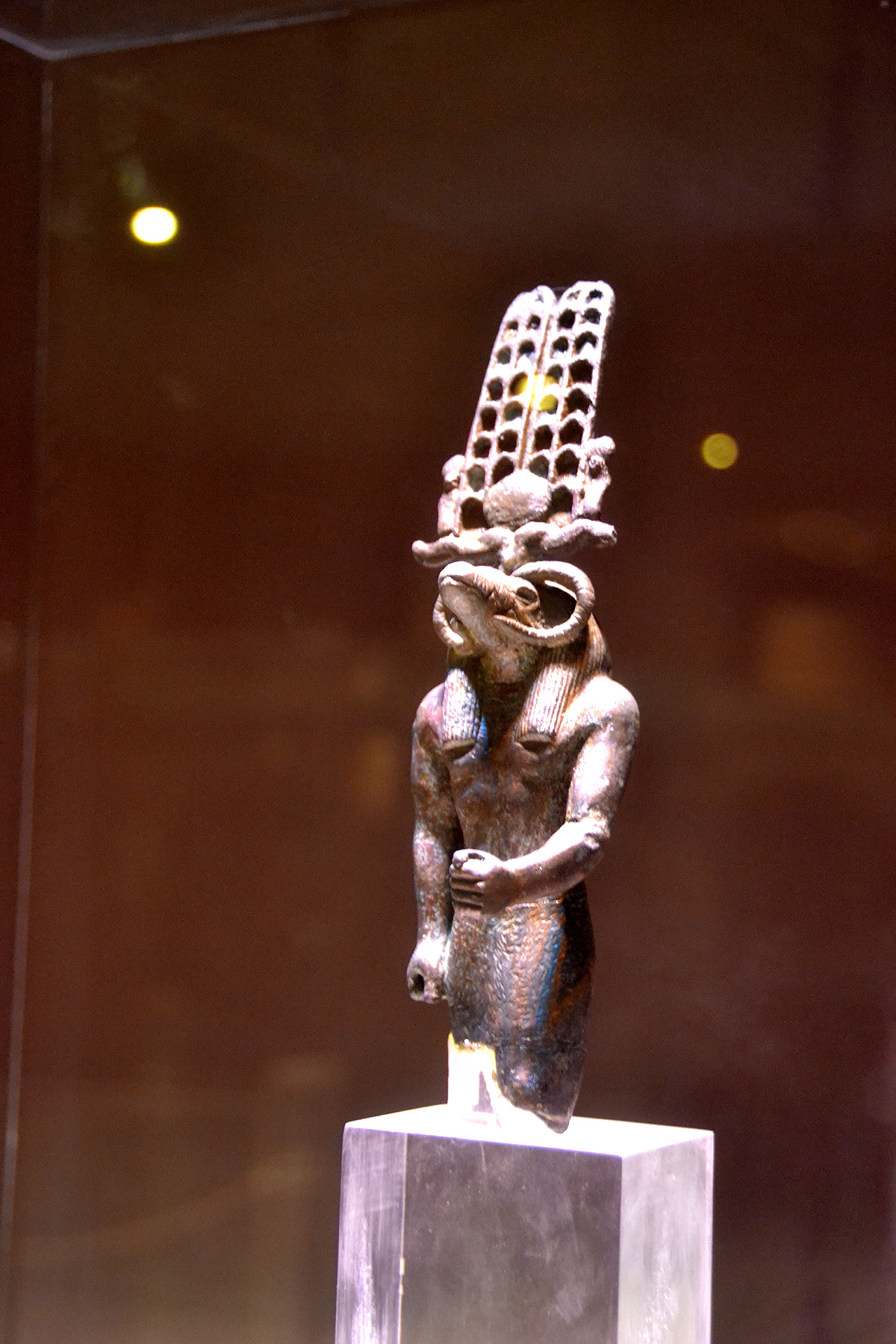

This beautiful bronze figurine of Sobek depicts the crocodile-headed god with a muscular human body that emphasizes his power and fertility.
The figurine dates to the Late Period (724-333 BCE) and was likely once adorned with inlaid or enamel colors.
Sobek wears a headdress with ram horns. This is topped by a sun disk and a plume of feathers that link him to the sun.
3. Fayoum mummies
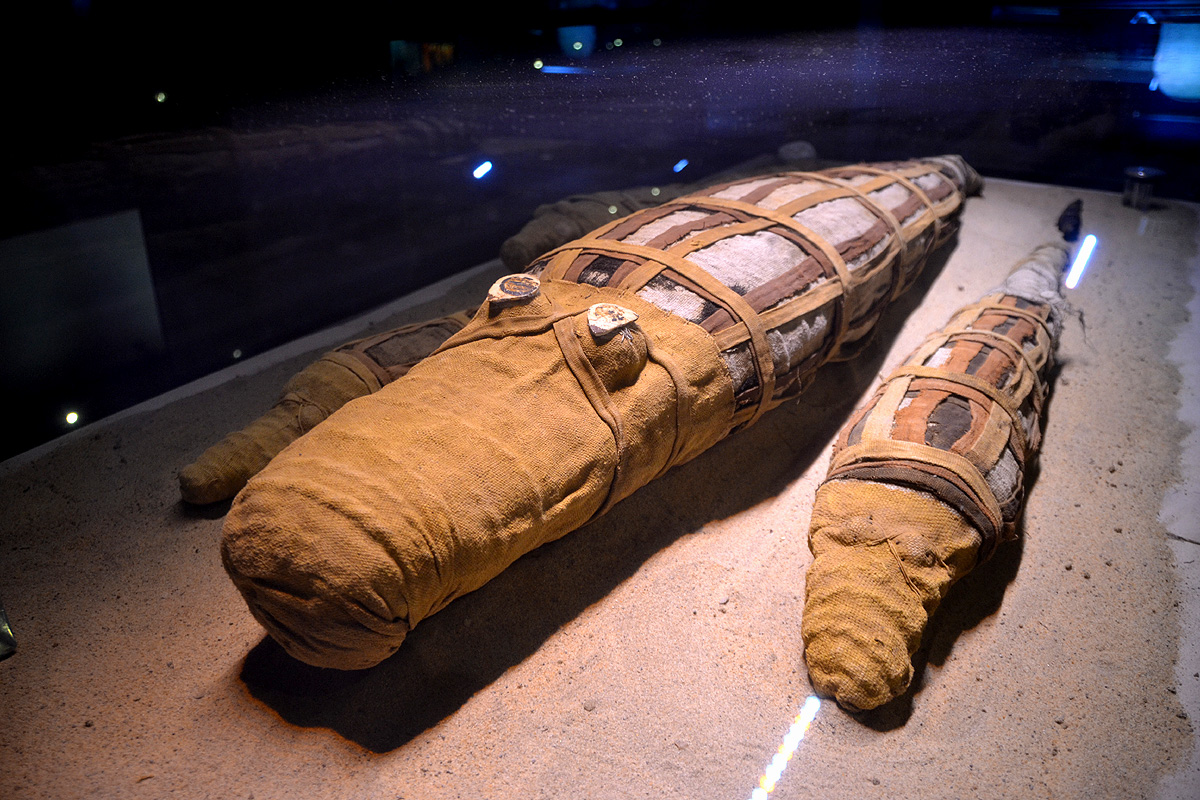

This array of colorful, bandaged mummies from Fayoum were offered by faithful worshipers to the crocodile god.
Depending on their wealth, believers in Ancient Egypt made offerings to Sobek in the form of large, mummified crocodiles or smaller animals and tokens.
Dating to the Roman Period (30 BCE to 450 CE), these mummies were found in El Shatb and Fayoum.
They are decorated with colored bandages or wrapped in simple linen. It’s thought bones and stones once adorned their eyes.
4. Stone and wood offerings
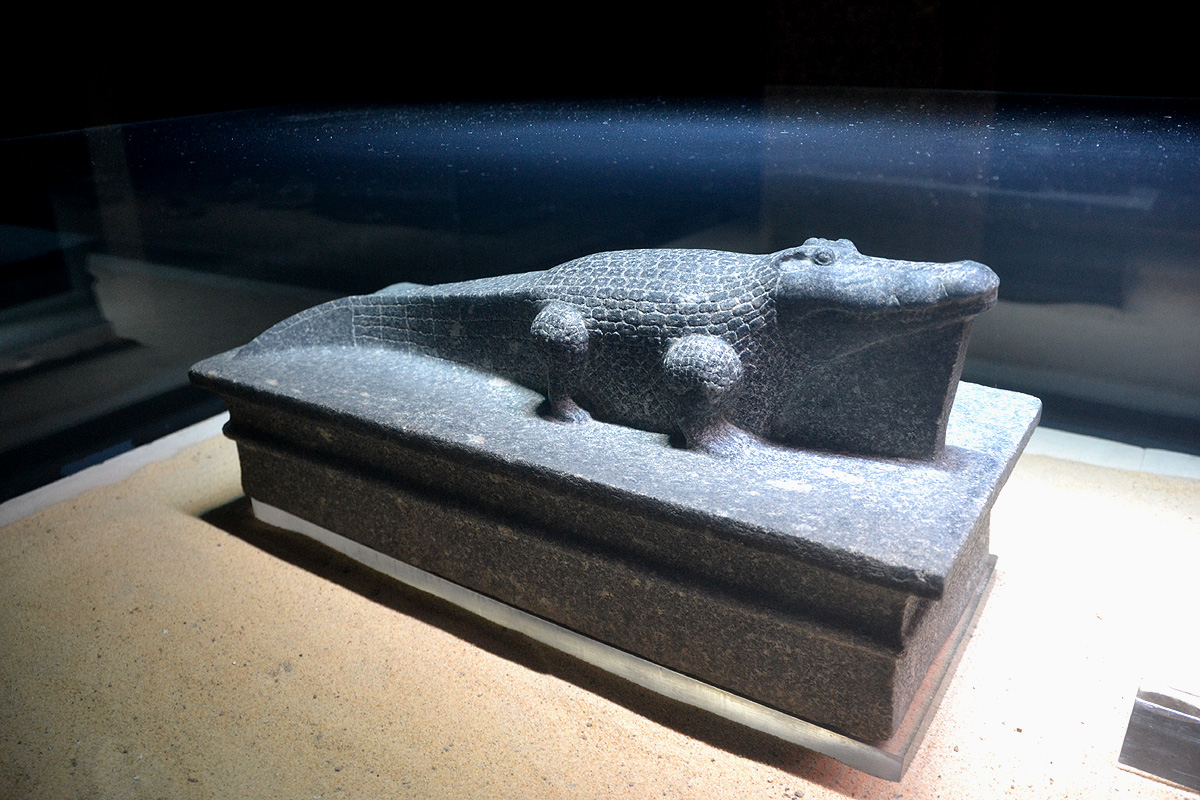

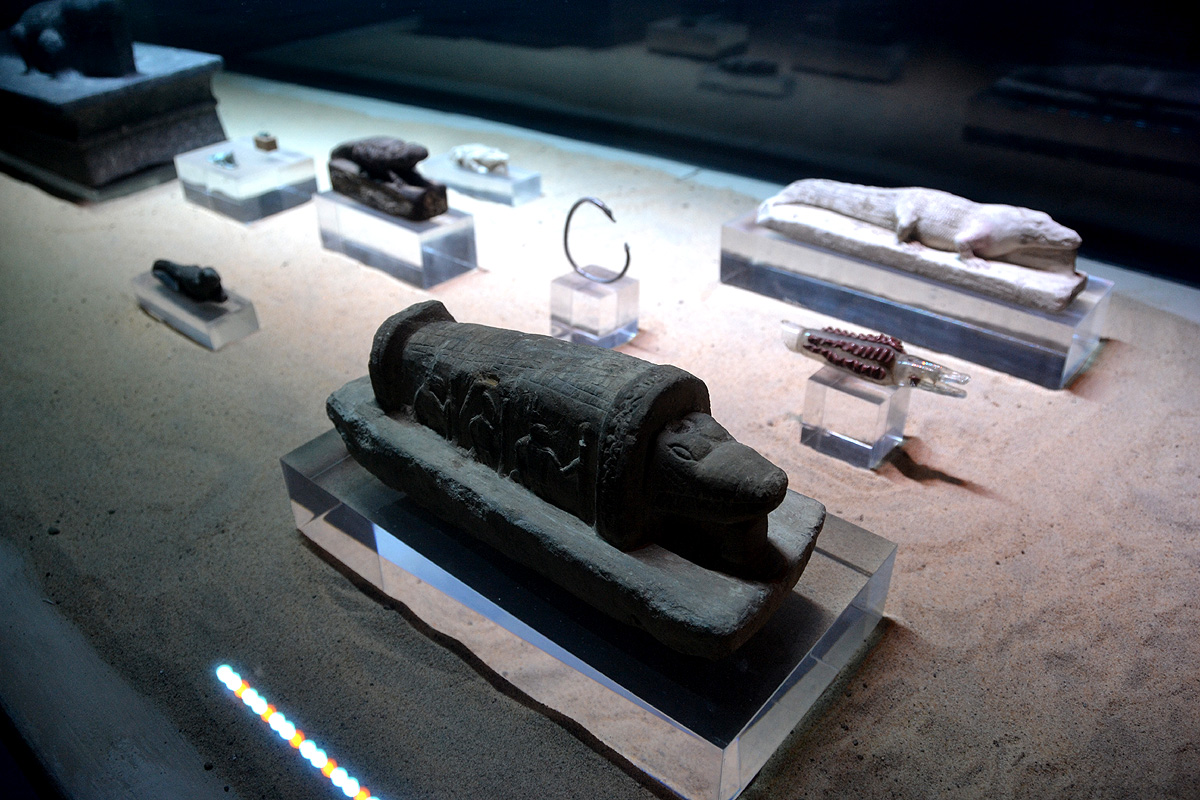

This collection of stone and wood crocodile figurines were offered to appease Sobek as more humble gifts compared to the full-sized crocodile mummies.
The selection of figures dates to the Graeco-Roman period (724 BCE to 450 CE) and were likely once gilded. Some of the figurines have holes in their heads where gilded solar disks were inserted.
The exhibit includes a limestone image of a crocodile mummy and a wooden crocodile atop a coffin that once held a croc mummy inside (now lost).
Crocodile eggs and fetuses were also offered to appease the crocodile god.
These tokens and small objects symbolized the people’s reverence for Sobek and desire for his blessings.
5. Nebnefer offering
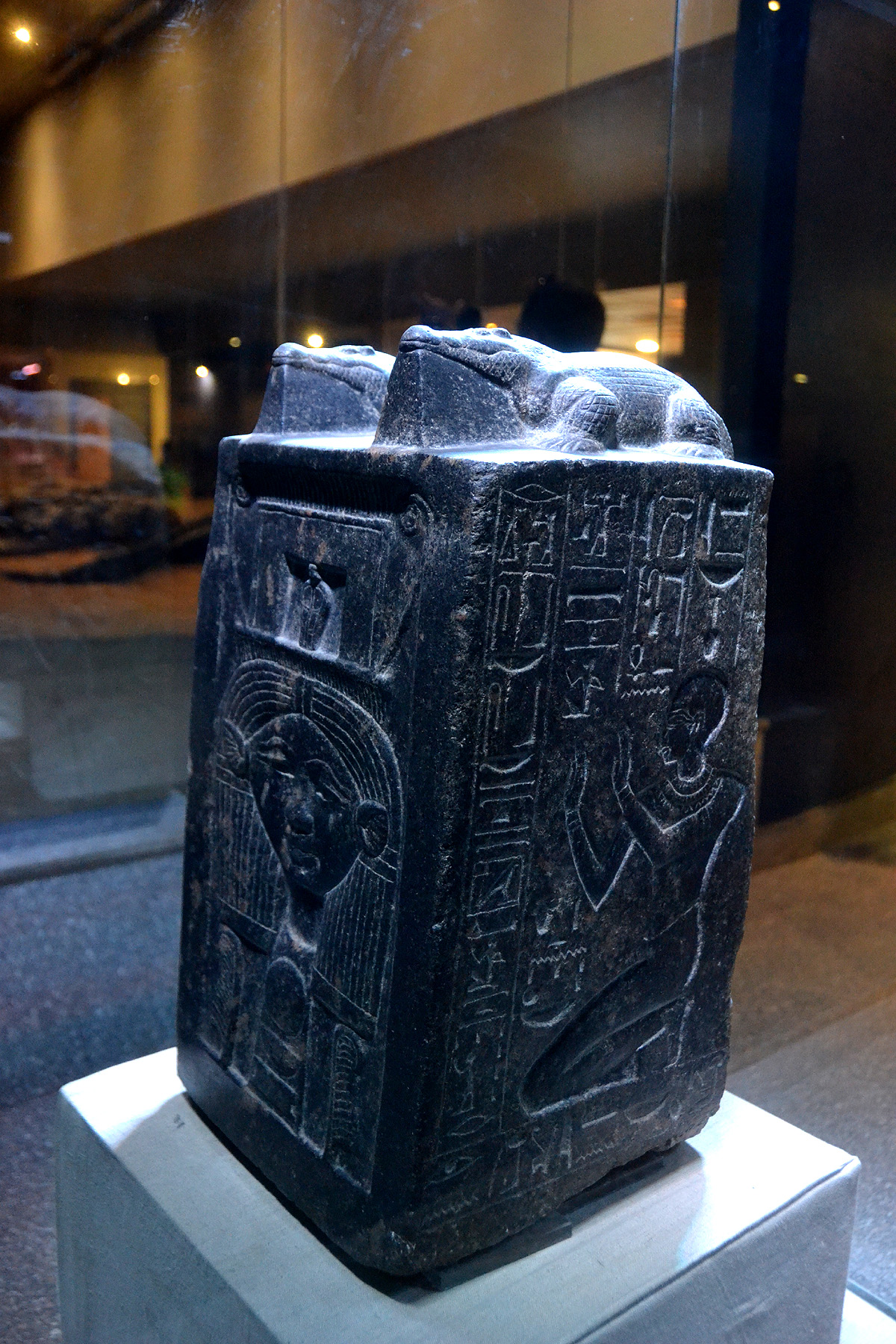

This beautiful object is an offering to Sobek from Nebnefer, a priest who lived during the reign of Amenhotep III (1391-1353 BCE).
The object is decorated on all four sides with images of the goddess Hathor, the name of Amenhotep III and depictions of Nebnefer praying to Sobek.
A pair of crocodiles adorn the top of the object and rest on its base.
How to get to Kom Ombo:
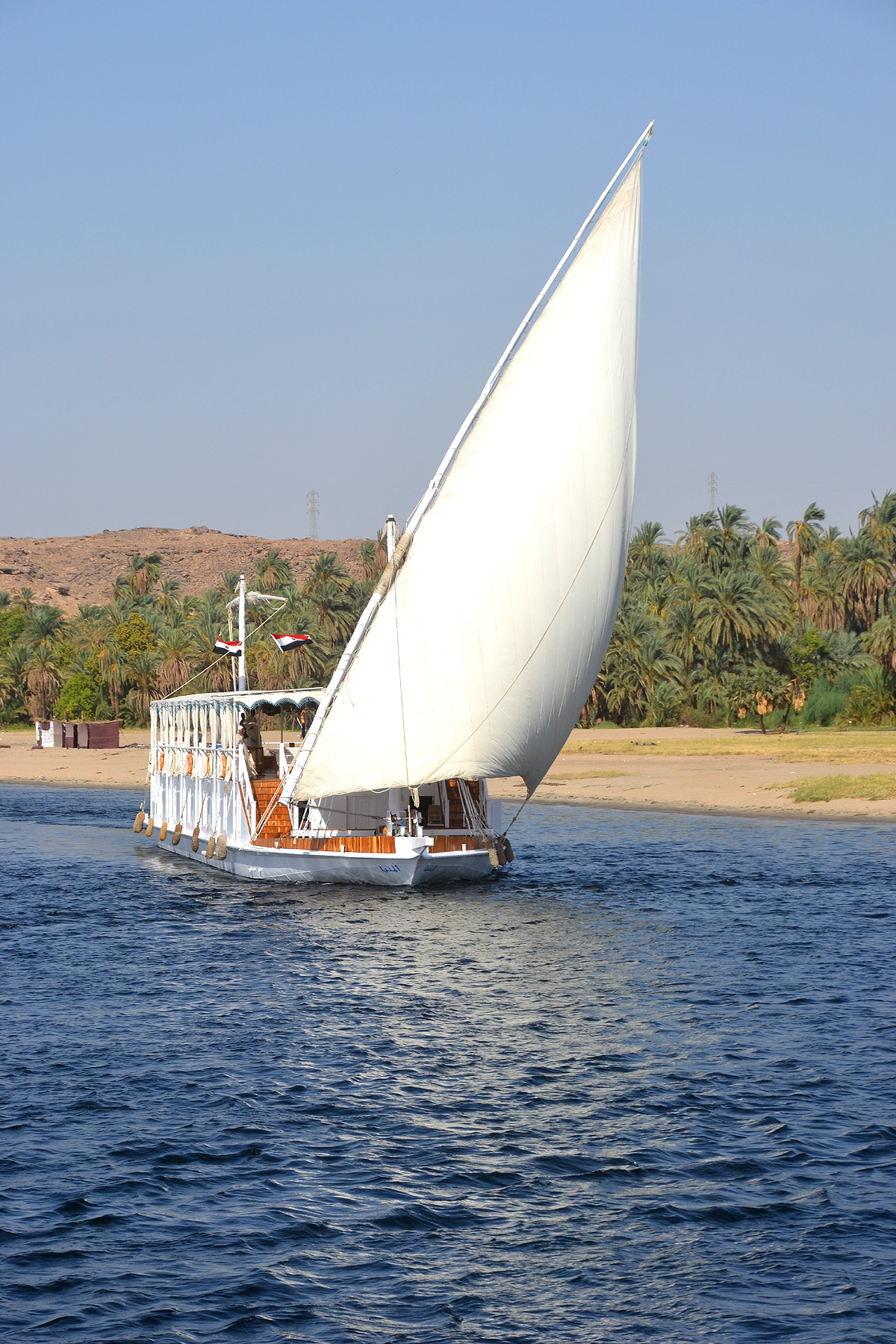

Kom Ombo is about 50 kilometres north of Aswan.
If you’re going on a Nile cruise, your boat will definitely stop at Kom Ombo. The itinerary usually starts with sightseeing at the Temple of Kom Ombo then a visit to this museum, which is right next door.
Alternatively, sign up for a day tour to Kom Ombo from either Luxor or Aswan. If you’re going solo, take a local train or hired driver to Kom Ombo from either city.
Need to know:
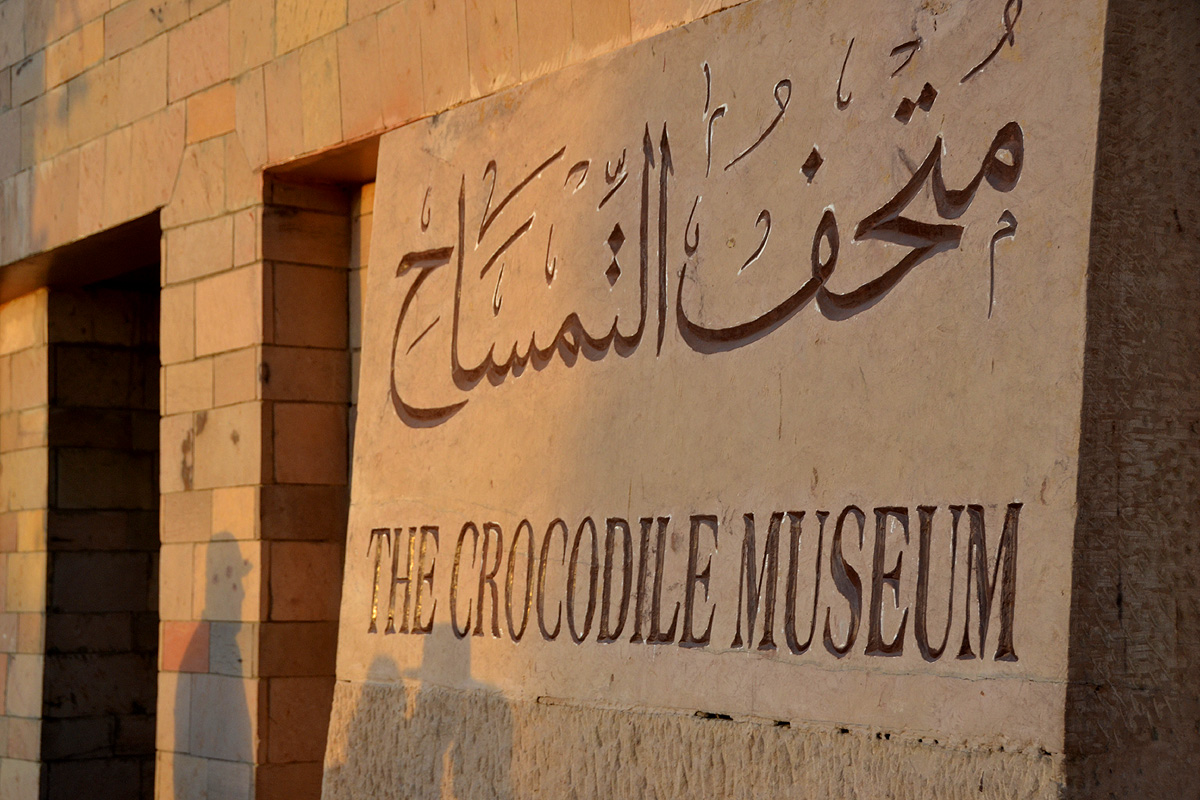

Tickets: 240 EGP (360 EGP starting from December 2023). Your ticket to the Temple of Kom Ombo includes entrance to the crocodile museum.
Hours: Daily from 7am to 9pm.
Conclusion
With its fascinating collection of crocodile mummies, statues and curiosities, the Kom Ombo Crocodile Museum is a must-see on your Egypt itinerary.
This intriguing museum narrates the history of Ancient Egypt’s crocodile god and details the complex process of animal mummification.
The museum enriches your experience of the Temple of Kom Ombo – and offers fascinating insights into Ancient Egyptian rituals and beliefs.
I would love to hear from you. Is the Kom Ombo Crocodile Museum on your Egypt itinerary?
MORE RESOURCES:
12 Must-See Things At The Temple of Kom Ombo
Pin it:
